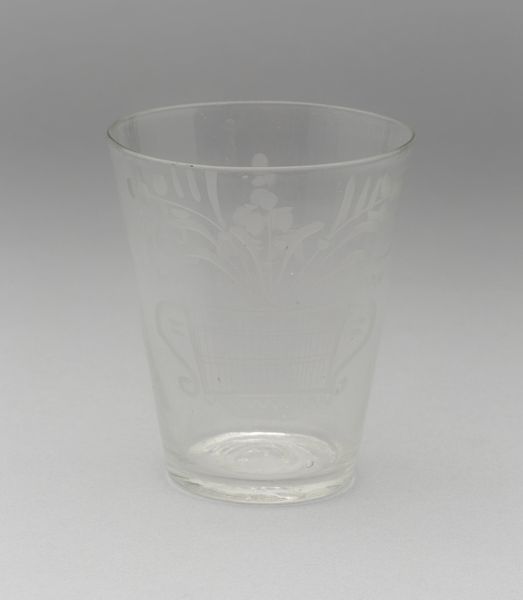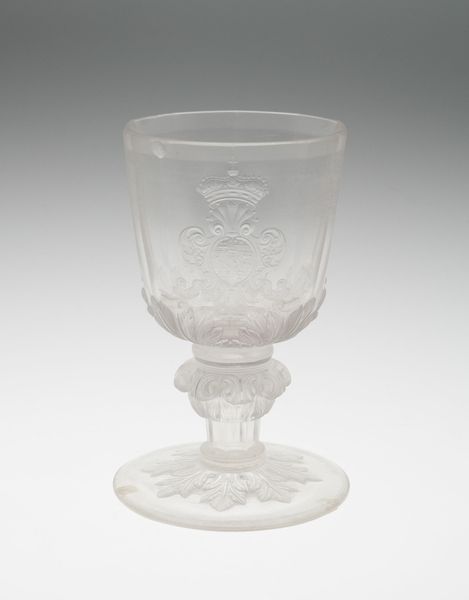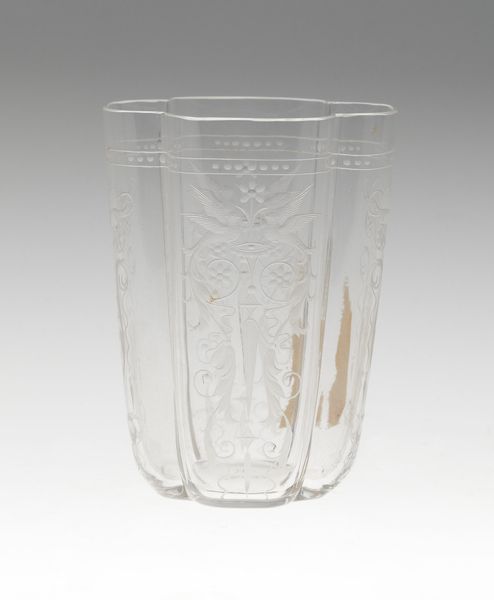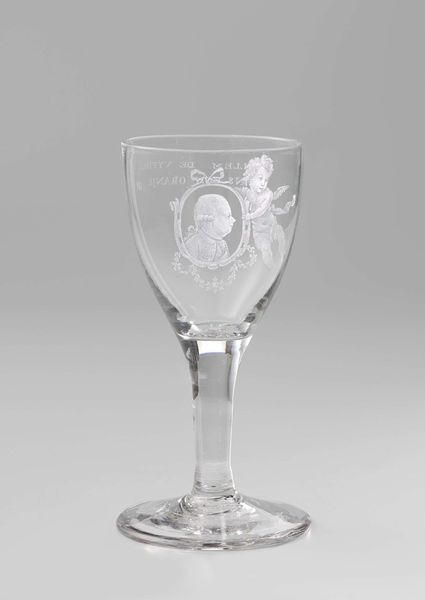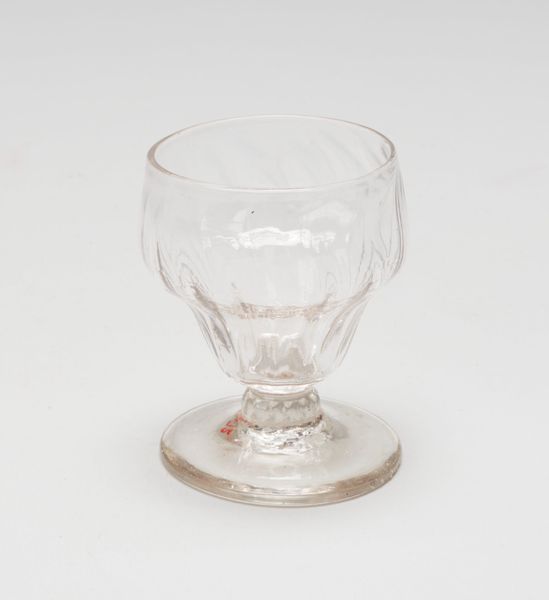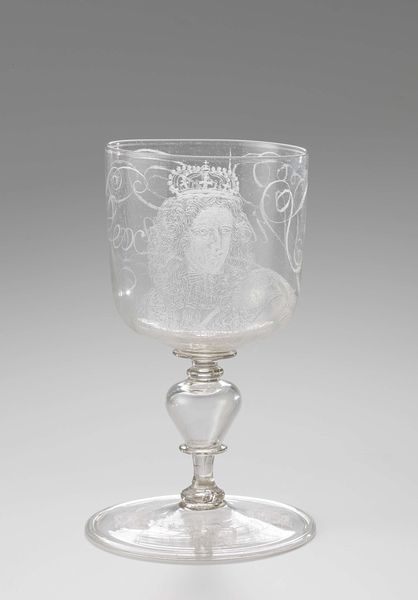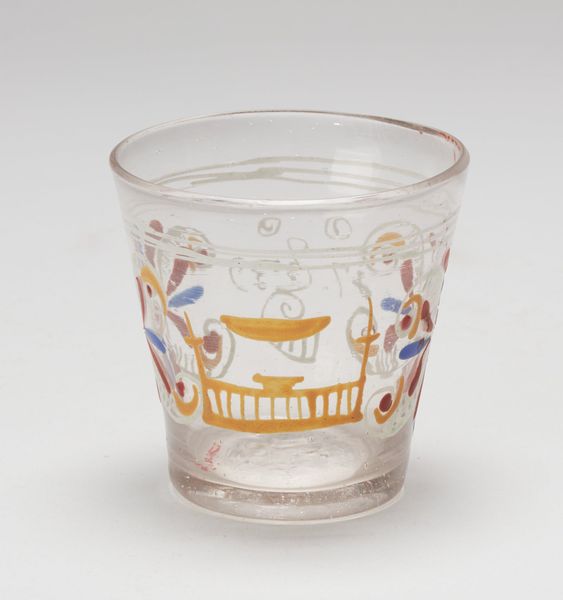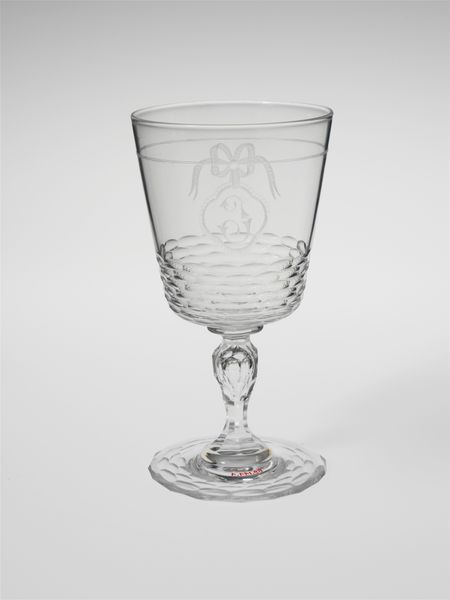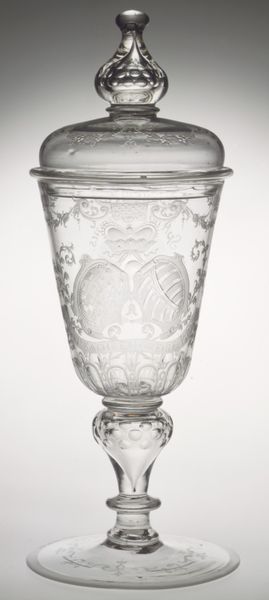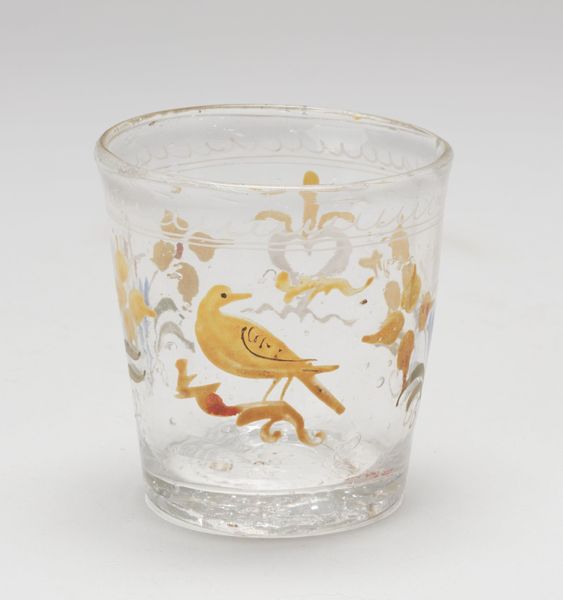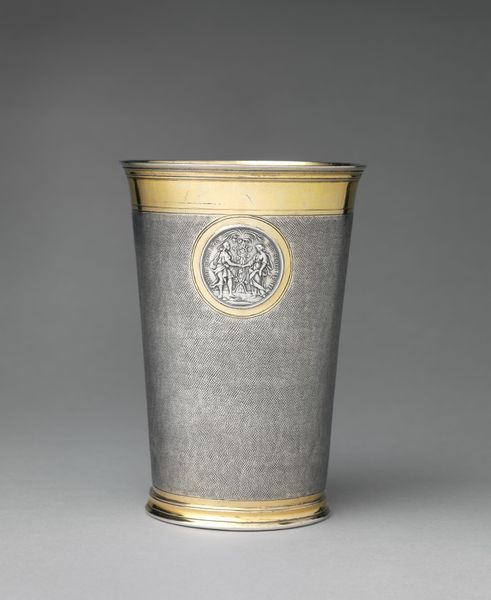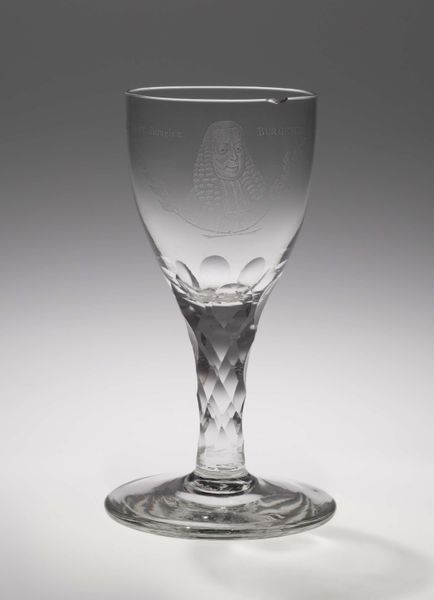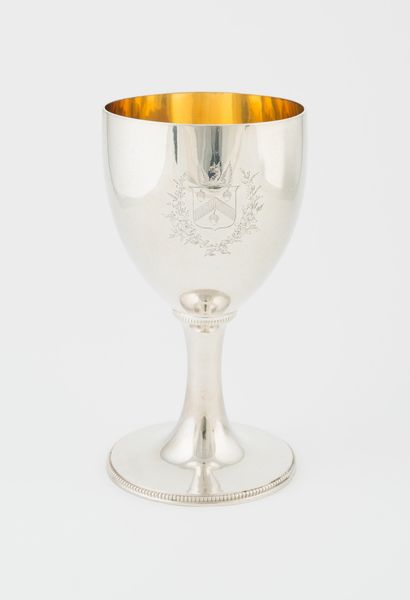
glass
neoclacissism
glass
decorative-art
Dimensions: 11.4 × 7.5 cm (4 1/2 × 2 15/16 in.)
Copyright: Public Domain
Curator: Here we have a "Beaker" by Johann Joseph Mildner, created around 1787. It’s a fascinating example of late 18th-century decorative art made of glass. Editor: My initial impression is of restrained opulence. It's deceptively simple, yet that central crest suggests hidden wealth and privilege. It makes me think about who would have used something like this. Curator: Precisely. Mildner was known for these precisely enameled and gilded glass pieces. They were often commissioned by European nobility and gentry, showcasing their status through heraldry and refined craftsmanship. The Art Institute of Chicago, where this beaker currently resides, positions it well within a larger narrative of luxury objects and elite consumption during this period. Editor: It feels charged. It is neoclassical in its style, but heraldry speaks volumes about class structures, power, and inherited inequalities. It is important to recognize that seemingly decorative pieces are not ideologically neutral. Who owned the 'F' initial shield and what was the legacy built upon? Curator: A critical point. We need to consider the socio-political climate of the time. These weren't merely decorative objects. They were signifiers of identity, of belonging to a privileged class during a period of immense social upheaval, just before the French Revolution. Mildner's skill, while technically brilliant, served to uphold those systems. Editor: The intricate detailing within the medallion is quite striking—almost an overcompensation. And to hold and drink from something that blatantly states your superiority over others. The level of separation that represents is quite profound, even in this age. It should remind us of the ways those systems still exists around us. Curator: That friction—the beauty juxtaposed with its implicit social statement—makes it such a compelling object to study and to critique. And museums serve a really vital role when they help reveal them. Editor: Absolutely. Examining this beaker allows us to critically analyze historical systems of power. To contextualize not just the 'what' and 'how' of its creation, but the 'why' it mattered, and continues to matter, in understanding societal structures and inequality.
Comments
No comments
Be the first to comment and join the conversation on the ultimate creative platform.
